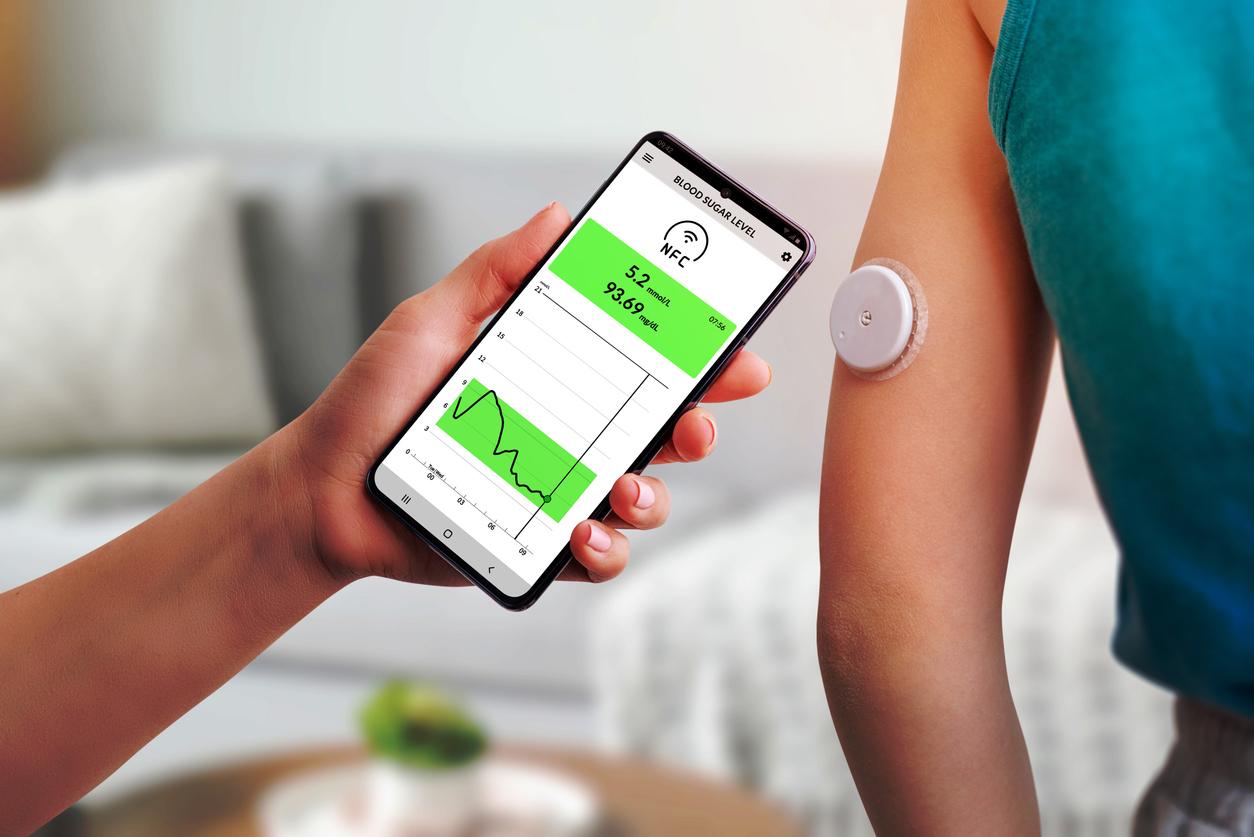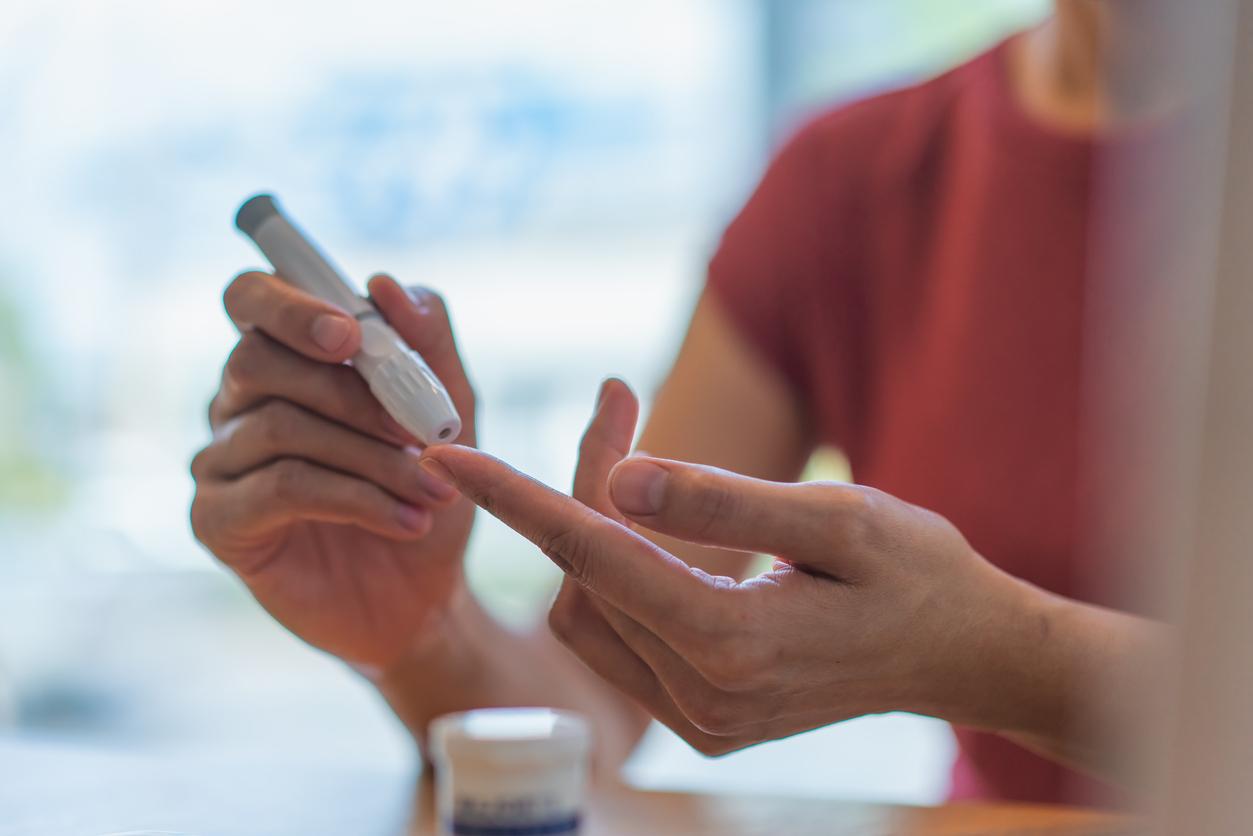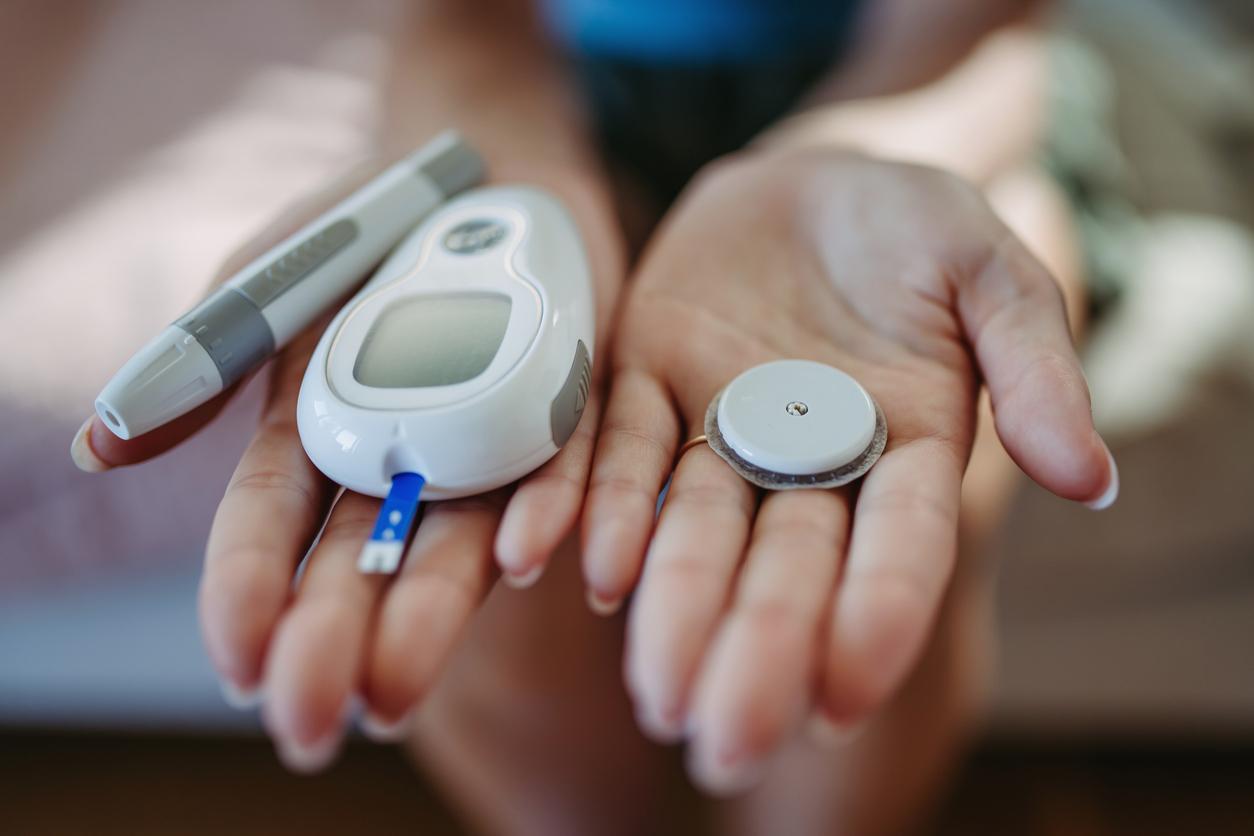Originally designed for people with diabetes, more and more people are using glucose sensors to assess the effects of diet and physical activity on their blood sugar levels, and the impact on their well-being.

- Essential for patients suffering from diabetes to assess their blood sugar levels, the devices are increasingly used today by people without diabetes to estimate how diet and physical activity affect their blood glucose levels.
- Essential for patients suffering from diabetes to assess their blood sugar levels, the devices are increasingly used today by people without diabetes to estimate how diet and physical activity affect their blood glucose levels.
- These devices can also be useful for people with high glucose levels who are not yet diabetic, i.e. prediabetes.
- Some experts, however, fear that this hyper-monitoring could cause unnecessary anxiety in healthy users.
Connected watches have now invaded our daily lives, monitoring every step and every heartbeat. But a new generation of tools promises to go further to monitor one’s health and, more generally, one’s well-being: portable glucose sensors, or glucometers. A article published in the columns of the American daily Chicago Tribune takes stock.
Essential for patients suffering from diabetes to assess their blood sugar levels, devices are increasingly used today by non-diabetic people to estimate how diet and physical activity affect their blood glucose levels. And how this could be linked to their mood, their energy level or even the quality of their sleep.
Measuring the effect of lifestyle on metabolism
Sensors, such as Abbott’s “Lingo” or Medtronic’s “Guardian Connect”, are worn on the back of the arm and measure glucose through the interstitial fluid (between cells) under the skin, using a tiny filament inserted beneath the surface. The data is visible in real time on a mobile application, allowing the user to understand how their food choices and activity influence their blood sugar levels. For Pam Nisevich Bede, nutrition manager at Abbott, “glucose impacts everyone, influencing mood and energy”. The goal of this technology, she says, is to educate users about the effect of their lifestyle on their metabolism.
These devices may also be useful for people with prediabetes – who have high glucose levels but are not yet diabetic. Dr Falguni Vasa, specialist in endocrinology interviewed by the Chicago Tribunesees in these sensors an opportunity to adopt healthier habits: “By identifying peaks, we can better choose our diet and lifestyle.” Users could, for example, adjust their meals after noticing an increase in their glucose levels linked to certain foods.
A risk of anxiety in healthy users?
Other experts, however, fear that these sensors could cause unnecessary anxiety in healthy users. “For a limited period, this may raise awareness, but in the long term, this hyper-surveillance could have perverse effects”warns Dr Natalie Cameron, of Northwestern University.
In France, in 2022, Jean-François Thébau, vice-president in charge of advocacy for the French Federation of Diabetics (FFD), was already warning that“having a glycemic peak after eating a slice of jam is completely normal, it’s part of the metabolism” and that “Wanting to erase these glycemic peaks, when you are not sick, is nonsense”. If wearable glucose sensors open up new health perspectives, according to him, they should not become a well-being and slimming gadget used by people who have no need for them at all.


















